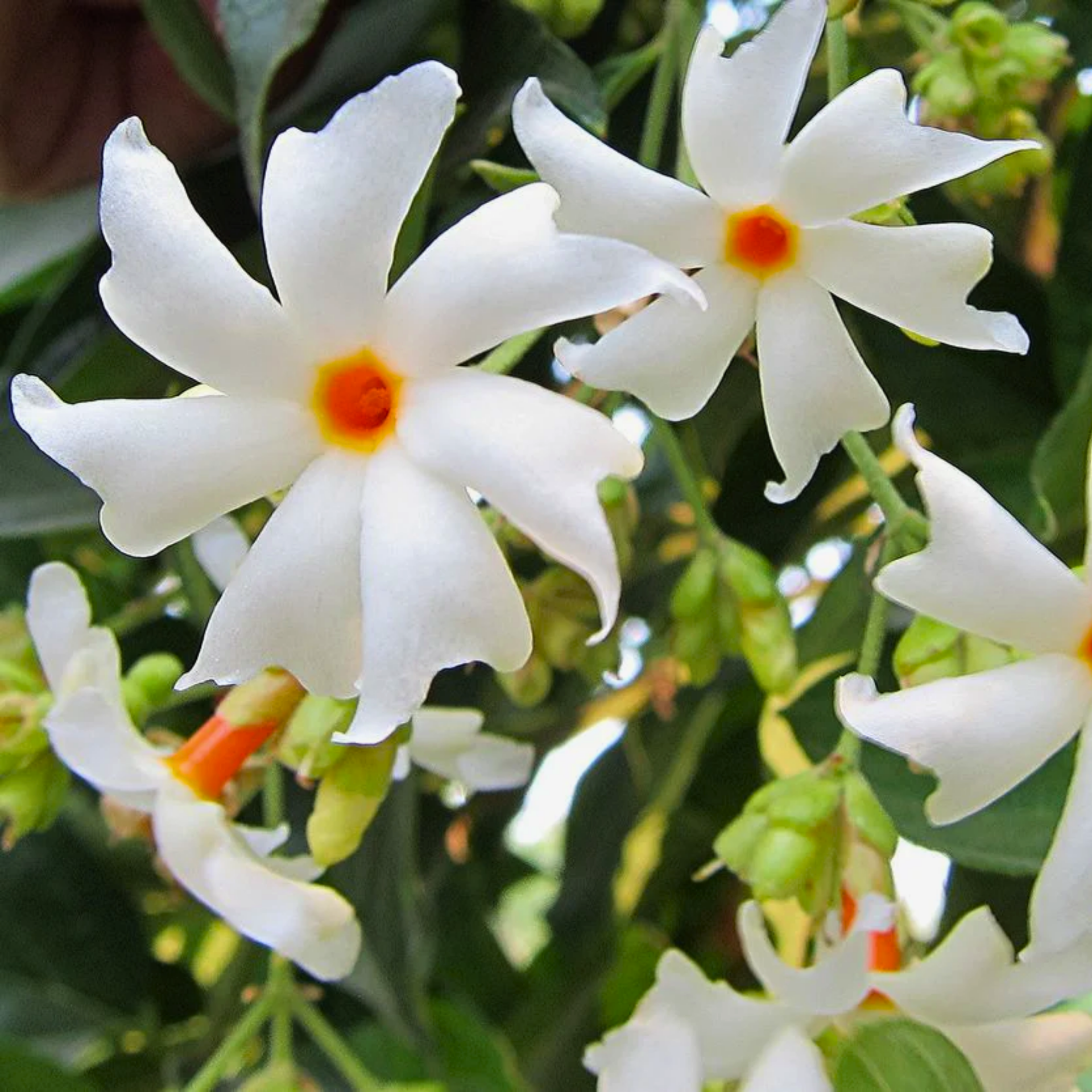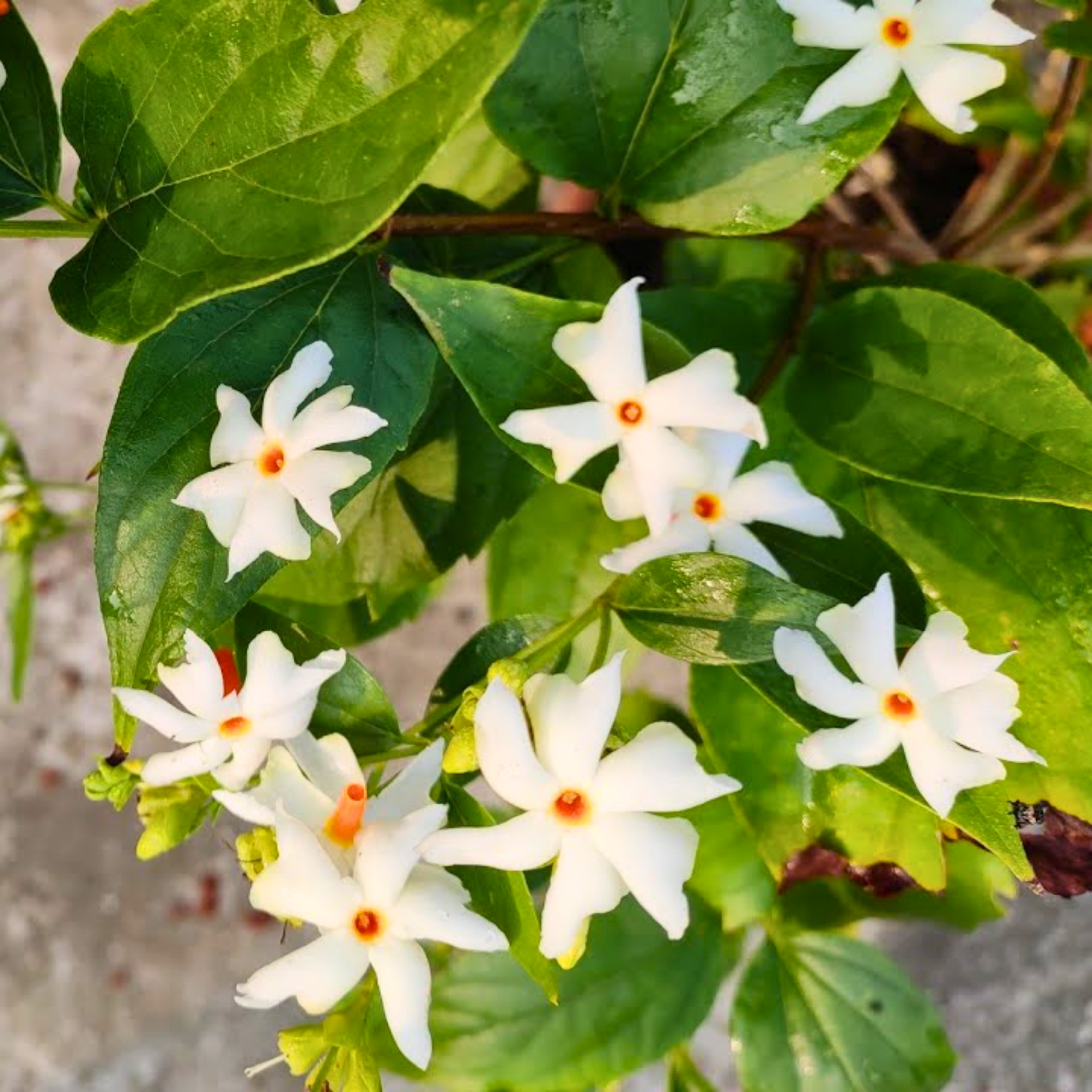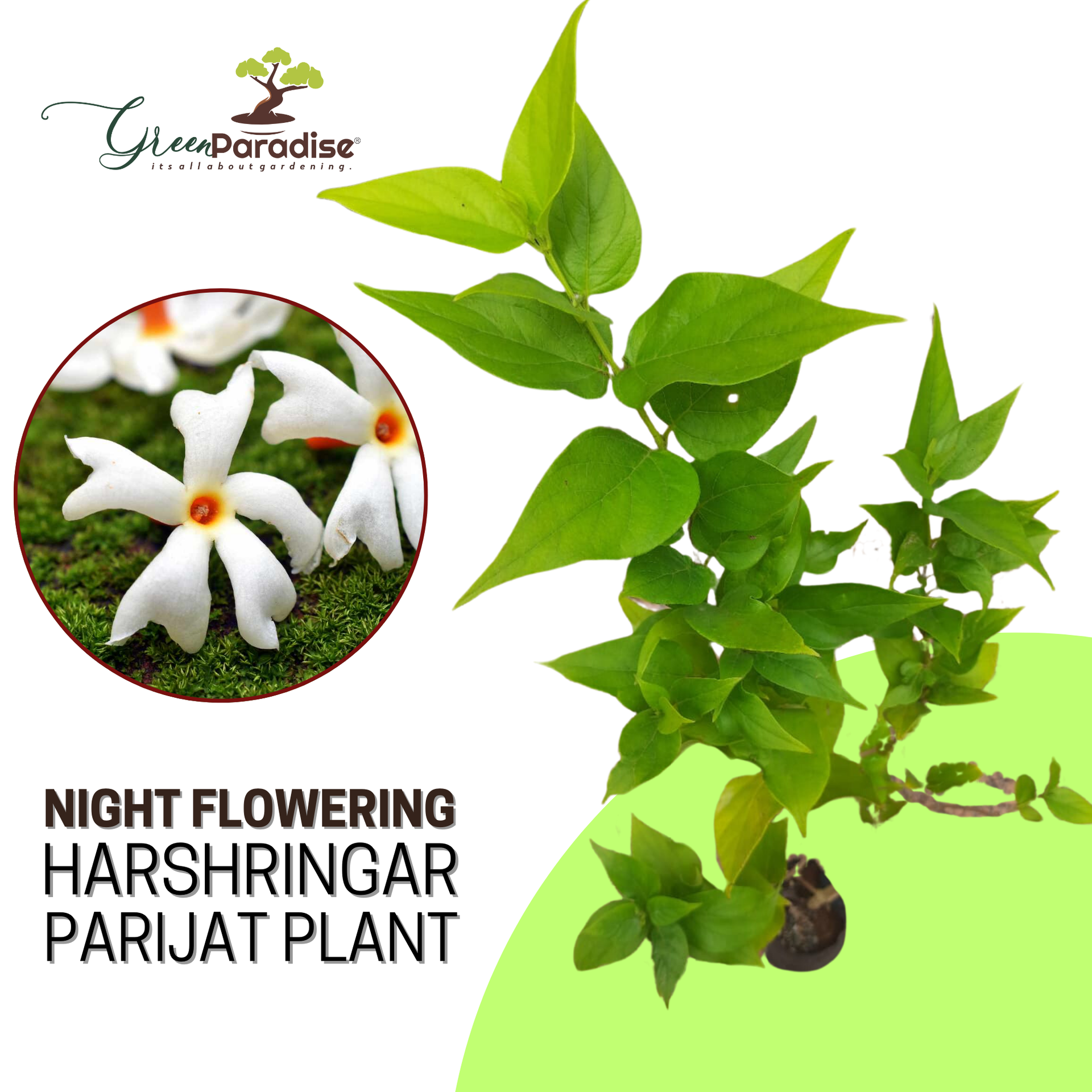



Green Paradise Parijat Plant Night-flowering jasmine Live Plant
Rs. 299.00
Guaranteed Safe Checkout
🌿 Green Paradise® Harshringar Parijat Plant 🌿
Transform your garden with the divine beauty of the Harshringar Parijat plant! Known for its fragrant white flowers with an orange stem, this sacred plant blooms at night and sheds its blossoms in the morning, adding a mystical charm to any space.
Benefits:
🌸 Aromatic Beauty:
Fills your garden with a soothing fragrance.
🌿 Medicinal Properties:
Traditionally used in Ayurveda for its therapeutic benefits.
🌳 Low Maintenance:
Thrives with minimal care, perfect for beginners.
Care Instructions:
![]()
Light: Prefers bright, indirect sunlight.

Water: Keep the soil consistently moist but well-drained.
Soil: Grows best in fertile, well-drained soil.
Add the Harshringar Parijat to your garden today for a touch of elegance and natural wellness!
More Details: https://greenparadiselive.com/blogs/more-about-harshringar-parijat-plant/green-paradise%C2%AE-harshringar-parijat-plant






